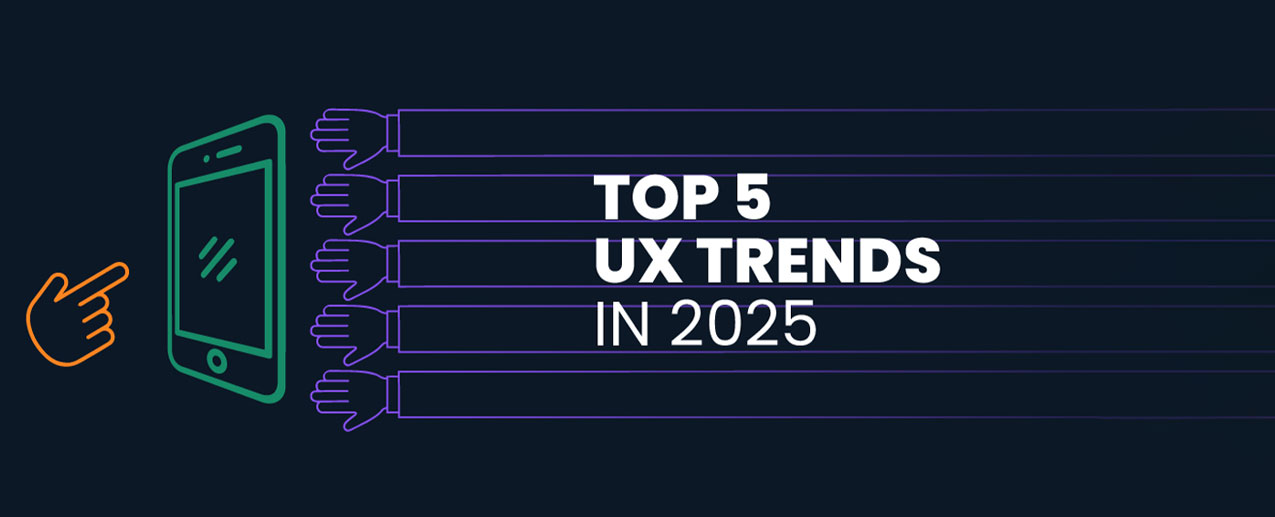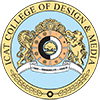Top 5 UX Trends in 2025: Skills Every Designer Learns at ICAT College

UX design is entering a new phase in 2025, where emotion, usability, and smart technology come together to create seamless experiences. The focus is no longer just on visuals, but on how people feel, interact, and navigate through digital products. From AI-driven personalization to ethical and inclusive design, UX is reshaping the digital world.
For instance, Google Maps makes it easier for beginners to navigate, while Spotify adapts its layouts according to screen size, demonstrating how design is growing smarter and adaptable.
These shifts, in turn, are setting new benchmarks in design education. Institutions are moving beyond theory and tool-based teaching, placing more value on research, real-world testing, and user-focused thinking.
This article explores the top UX trends shaping 2025 and how ICAT College equips students with hands-on practice to master them.
1. Smarter UX with AI-Powered Personalization
What it is:
UX designs are becoming increasingly intelligent and adaptive. AI has made it possible for interfaces to examine user behavior, such as browsing patterns and preferences, and instantly modify information or recommendations to meet each individual needs.
For example, shopping apps that suggest products based on past purchases or tailor offers based on user interests.
How to leverage this trend:
Understand how to read user data and use it effectively in design. Start creating smarter, user-specific experiences with AI-powered tools like Adobe Sensei or Figma plugins.
How ICAT College supports it:
At ICAT College, students work on interactive UX projects that use real-time data and behavior mapping. Through hands-on practical modules, they learn how to design experiences that think ahead, just like the platforms we use every day.
2. Navigate Hands-Free with Voice and Gesture Interfaces
What it is:
The scope of user interaction is growing beyond displays. In wearable technology, smart gadgets, and immersive platforms like AR and VR, voice commands and gesture-based controls are now common ways to interact with digital products.
For instance, smart assistants such as Amazon Alexa enable users to operate devices, play music, and obtain information by simply speaking.
How to leverage this trend:
Learn how to create touch-free navigation and conversational flows. The development of user-friendly speech and gesture experiences is aided by tools such as AR/VR prototype platforms.
How ICAT College supports it:
ICAT College offers hands-on training in voice, chat-based user experience, and immersive technologies like AR and VR. As part of real-world projects, students design and prototype gesture-enabled and voice-controlled interactions that represent user experiences that are ready for the future.
3. Digital Spaces Accessible for Everyone
What it is:
Good UX is about usability for everyone, not just aesthetics. Digital products with inclusive design are made to be usable by individuals with a variety of needs, including those who are disabled or have other impairments.
According to the Centre for Internet and Society (CIS), out of 7,800 Indian government websites, 5,815 had significant accessibility issues. This shows the increasing demand for designers capable of producing inclusive digital experiences that are accessible to individuals with impairments.
How to leverage this trend:
Start by getting familiar with simple accessibility basics. Check if your designs support keyboard navigation, have good color contrast, and work with screen readers. Even small changes, like clear fonts and alt text, can improve usability for many.
How ICAT College supports it:
The design learning process at ICAT College incorporates accessibility. Students learn how to make designs that are inclusive by design in addition to being useful through practical exercises and user testing.
4. Enhance Users with Subtle Micro-Interactions
What it is:
Even very little animations, such as button hovers, loading spinners, or swipe feedback, help users navigate, validate activities, and create a smooth, natural experience when using digital devices.
For example, Twitter displays a heart animation when a tweet is liked, while Airbnb uses soft hover effects to improve navigation, and short, subtle touches that keep consumers interested.
How to leverage this trend:
Start by incorporating intentional micro-interactions using programs like Lottie or Figma Smart Animate. An interface feels more comprehensive and responsive when even something as basic as Gmail's animated "sent" tick is included.
How ICAT College supports it:
Students at ICAT College create interactive projects with an emphasis on motion-based user input, such as hover effects, swipe transitions, and animated buttons. Their work, which is on display at ICAT's official showcase, demonstrates how minor animations infuse ordinary UX with vitality and clarity.
5. Ethical and Sustainable UX, Designed with Purpose
What it is:
Today, UX design also involves responsibility. Designers are increasingly considering how to provide honest, meaningful experiences, avoid manipulative techniques, and use less energy.
For instance, websites that function well even with sluggish internet connections or apps that provide dark mode to conserve battery life demonstrate how design can benefit both people and the environment. One such considerate option is Ecosia, a search engine that uses the money it receives from ads to plant trees.
How to leverage this trend:
Make your designs simple and effective. Use simple graphics, stay away from clutter and autoplay, and create decisions that value the user's time, information, and focus. Simple choices like minimalist design or low-energy themes are quite effective.
How ICAT College supports it:
Through a specific module called Sustainability by UX Design, students at ICAT College investigate ethical and sustainable design. They concentrate on practical projects that emphasize load times, layout simplification, and empathetic design, making their work not only intelligent but also accountable.
Final Thoughts: Why ICAT College Stands Apart
Choosing a UX/UI course is more than just learning tools; it's about preparing to thrive in a fast-moving design world. Here's where ICAT College makes a real difference:
- Pioneer in design education
- Hands-on projects from day one
- Industry-aligned curriculum
- 100% placement support
- Equipped labs and expert mentorship
If the goal is to design experiences that are smart, inclusive, and future-ready, ICAT College provides the tools, training, and real-world exposure to make it happen, backed by dedicated placement assistance with top recruiters like Amazon, TCS, and more.
Ready to design the future? Apply Now and take the first step!




